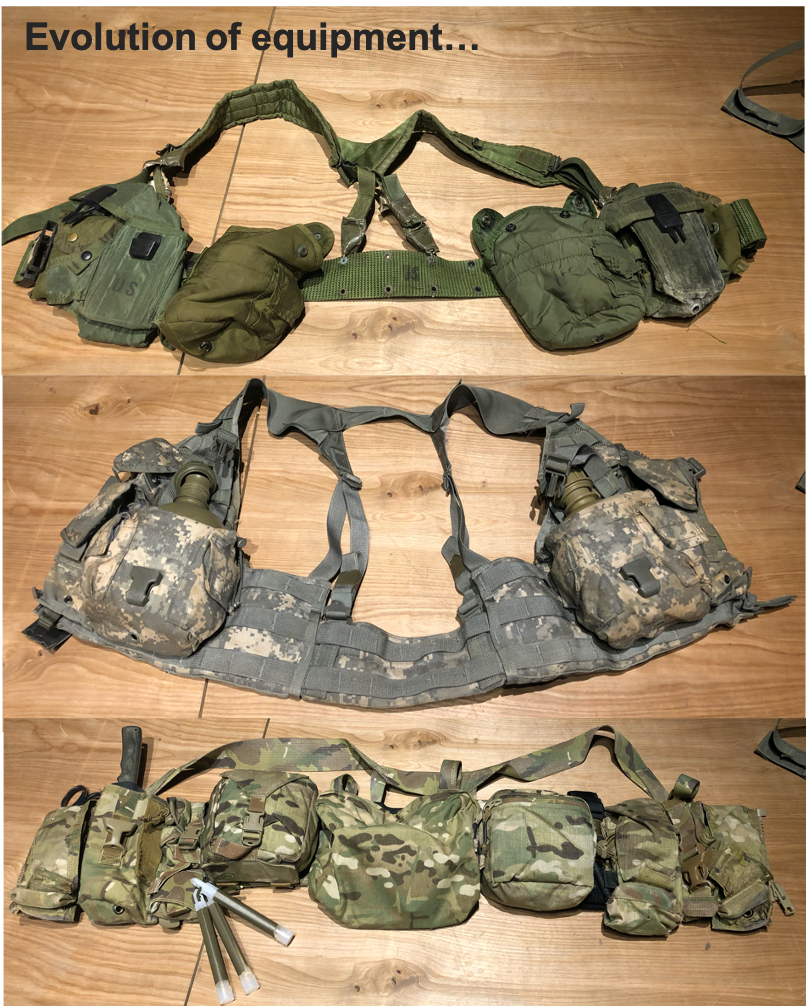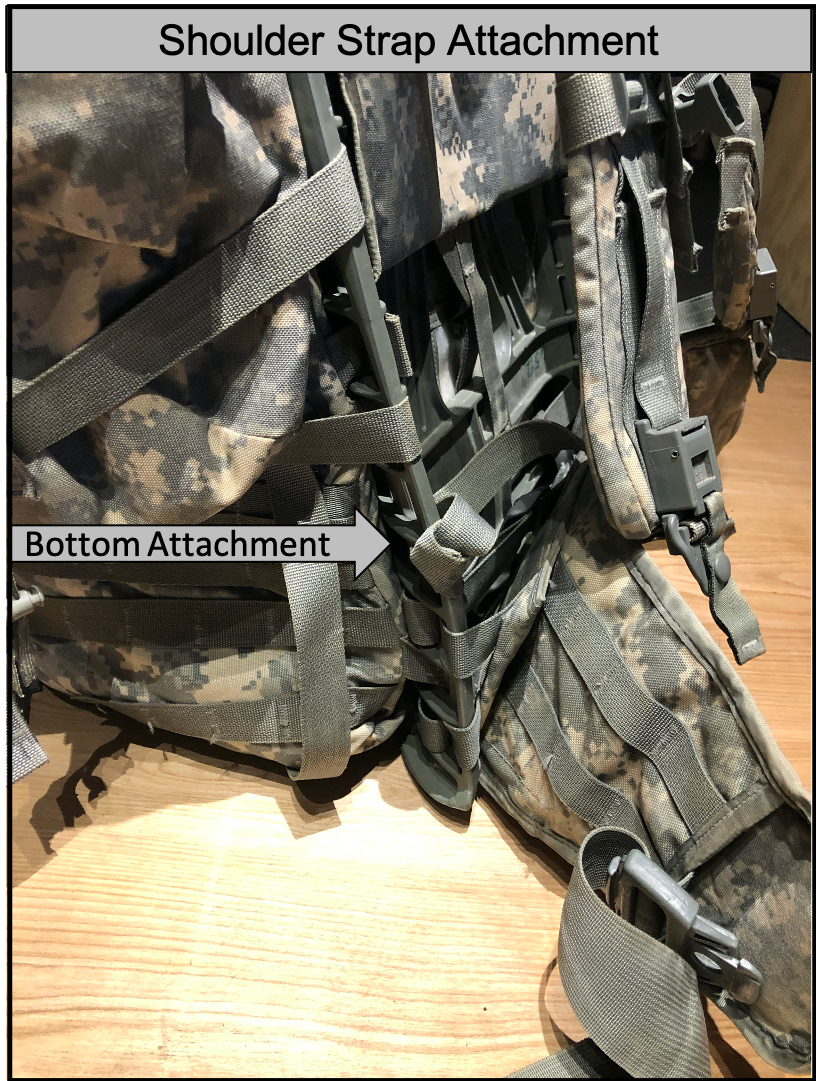Fitting
Now that you have a general idea about how I think about what you should generally pack, and where to generally pack it; we can turn our attention to fit.
Kit
Every time you change the fit or wear of an item of kit, you need to make sure it is still compatible with the rest of your gear (especially your ruck). I have several general rules for kit:
-
Nothing gets in the way of utilizing your tools (this could mean weapon–nothing restricts it from getting into the pocket of your shoulder when firing, or it could mean medical equipment–medics should not adjust their kit in a way that would prevent them from employing their medical equipment, or it could mean that your radios need to be accessible, easy to adjust and program while wearing your kit since they are a leader’s most lethal asset).
-
Nothing restricts my ability to move. This means, I do not place anything on my kit that would slow me down (drop leg holsters), prevent me from climbing or running (anything on hip flexors and keeping things tight to my body), or catch on everything I walk past (antenna placement, large items). The goal, of course, is to be as streamlined as possible with the kit becoming more an extension of you and less something that you put on.
-
Equipment location is decided based on mission requirements. If I need to get to something immediately (magazine, tourniquets, compass, radios, zip ties, chem lights, demo, etc), items are prioritized up front. Things that I need access to but not immediately (I could do little dance if needed to get to them–such as water, grenades, VS-17 panel, etc), tend to go under my arms or on my back in a place that I can get to. Things I could have others reach (flash-bangs, medical pouch, signal kit, hooligan tool, etc) are placed on my back if I run out of real-estate else where.
-
Everyone is different and have different real-estate challenges. Smaller stature Cadets will struggle to place everything on their kit that is part of the SOP–leaders need to think about that before just forcing everyone to use all of the pouches they are issued. Do we really need two 1-quart canteens taking up valuable real-estate? Tall, thin soldiers can usually carry more up front without items digging into their hip flexors. Short, wider soldiers (my experience) can fit more on their sides, but cannot stack pouches on top of each other. Every person is different, it may take a while to find what works for you, and when you figure it out–keep working on it, something else may be better.
-
I prefer to wear my kit higher on my torso and limit anything below my belt. Anything on your legs is significantly draining. If I wear my kit lower and/or looser, I tend to lose mobility.
-
I adjust my kit to the mission requirements…every time. No standard solution will ever be optimal on every mission. Modularity is key in my opinion. What set up will give you the most flexibility on what to carry and where to carry it?
-
Once you have your kit set up for a mission, and it feels comfortable, do some rigorous movements to make sure you do not make any unnecessary noise, the items are secured, and you are able to move effortlessly.

Ruck
As I have already mentioned, prepare to have a love hate relationship with your ruck. The good news, is that the current Army version is very adjustable and modular. It can be adjusted to fit the vast majority of Soldiers. In the past, the army relied on a one size fit all approach–resulting in the ruck fitting no one optimally. The bad news is that the current Army version is very adjustable and modular, ignorantly adjusting it may ensure it REALLY does not fit!
Your ruck has essentially four points of adjustment while you are wearing it–basically where it connects to you:

-
The first is your hip belt. Do you rock a smiley kidney pad or a frowny kidney pad? I’ve found this to be personal preference. A ‘smiley’ kidney pad extends below the frame and may be best for some Soldiers. This set up works best for me because it keeps the ruck from interfering with my hip flexors while walking. The downside with this configuration is the back may interfere more with your glutes. This can of course be overcome by raising the belt slightly higher on the frame if needed. On short movements (less than 6-10 miles), I generally do not wear the hip belt. If I were using a ruck on an operation, I certainly would not wear the hip belt as it provides comfort at the expense of being able to get out of the ruck quickly.
-
The second is your shoulder straps. Look at where your shoulder straps connect at the bottom of your ruck. Again, this is personal preference. For me personally, I like to connect my shoulder straps a little below the midpoint of the ruck. I cannot cinch the straps down as tightly on my shoulders, however, it works for me. I moved the location of the bottom portion of these straps to prevent the shoulder straps from catching and riding on my kit as they did when the bottom connection point was at the bottom of the ruck. Again, everyone is different, you MUST experiment with various set ups to find what works for you.

-
The third is your sternum strap. Once you have your hip belt, and shoulder straps where you want them, connect your sternum strap (if you are not patrolling with your ruck) and adjust it. Similar to the hip belt, the sternum strap is used for longer movements to remove the load from the front of your shoulders.
-
The fourth and final adjustment point is the adjustment straps on the top of the shoulder straps that pull the top of the ruck towards you (adjusting the center of gravity slightly and moving the load from the top of your shoulders towards the front of them). The frame does not have as much flexibility as many hiking backpacks, and certainly does not extend high above the shoulders so this strap has limited use. Once you have the other three points where you want them, this would be the last strap you cinch down and may even be adjusted infrequently.
Smaller framed soldiers can move the hip belt up one setting or the shoulder straps down one setting to lower the torso height of the ruck. However, make sure that the bottom portion of the ruck is not interfering with your ability to walk and the upper portion of the ruck is not pushing against your kevlar, preventing you from being able to look up.
Similar to your kit, you want your ruck to be as streamlined as possible. Unless a mission requires it, keep objects inside your ruck. The two sustainment pouches on the outside may be a necessary evil if you are in an airborne unit and if your SOPs require them. These two pouches are for sustainment items (perhaps an MRE, and a poncho). Use them sparingly and only for things that need to be accessed fairly quickly.
These adjustments take time, practice, and experimentation! Do not let the pain of moving all of the straps and resetting the ruck prevent you from figuring out what works for you.